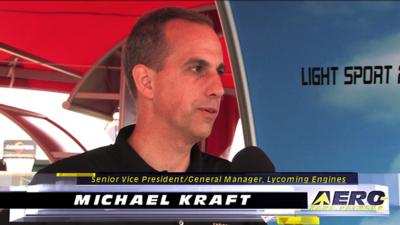Wed, Apr 01, 2015
Lycoming's Latest Innovative Technologies Unveiled In Surprise Announcement
ANN's April 1 "April Fool" Special Edition
Lycoming Engines is set to unveil its newest engine technology to the public today, designated the HHO-360-HCCH.

Driven by years of intensive research, the convergence of several advanced combustion and control technologies already incorporated in other Lycoming product lines, the need to migrate toward more environmentally friendly fuels, and the increased popularity emergence of Experimental aircraft, Lycoming has launched an engine that should start a revolution in the field of light aircraft propulsion and help re-engage people’s interest in aviation.
Not just an engine but also a hybrid electrical engine system, the core of the “engine” consists of a deep-cycle, fully rechargeable and renewable hydrocarbon battery in combination with a sodium ion saturated di-hydrogen monoxide fuel cell.

Work on the project dates back to the early 80s; however, the binary numeric reaction control technologies became feasible only in the last 10 years.
“It’s quite amazing how things can come together in such a short period of time,” stated Michael Kraft, Senior Vice President and General Manager of Lycoming. “Put a few of your brightest engineers in a locked room, take away their Xbox privileges, and slide them pizza under the door… it’s amazing what they can come up with.”

As it is primarily an electric machine, the introductory engine’s base rating is stated as 180 Mhos, with a reciprocal rating that is meeting some resistance in adoption by the regulators. Toxicity tests have been fully completed on the di-hydrogen monoxide fuel cell components, and while long-term corrosion effects are an engineering concern, the low-cost of the fluid is expected to outweigh any downsides. Lycoming is currently patenting the technology and giving credit to its engineering lead, Curley Larryfine. The patent firm of Dewey, Cheetum and Howe may be contacted for licensing arrangements.
More News
Airport Marking Aids Markings used on runway and taxiway surfaces to identify a specific runway, a runway threshold, a centerline, a hold line, etc. A runway should be marked in ac>[...]
"It is extremely difficult, if not impossible, for manned aircraft to see a drone while conducting crop-enhancing and other aerial applications at low altitudes and high speeds. We>[...]
Aero Linx: The Skyhawk Association The Skyhawk Association is a non-profit organization founded by former Skyhawk Pilots which is open to anyone with an affinity for the A-4 Skyhaw>[...]
“The T-54A benefits from an active Beechcraft King Air assembly line in Wichita, Kansas, where all required METS avionics and interior modifications are installed on the line>[...]
Aero Linx: Aerostar Owners Association The Association offers the Aerostar Owner a unique opportunity to tap an invaluable source of information concerning the care and feeding of >[...]
 ANN's Daily Aero-Term (04.28.24): Airport Marking Aids
ANN's Daily Aero-Term (04.28.24): Airport Marking Aids Aero-News: Quote of the Day (04.28.24)
Aero-News: Quote of the Day (04.28.24) ANN's Daily Aero-Linx (04.28.24)
ANN's Daily Aero-Linx (04.28.24) Aero-News: Quote of the Day (04.29.24)
Aero-News: Quote of the Day (04.29.24) ANN's Daily Aero-Linx (04.29.24)
ANN's Daily Aero-Linx (04.29.24)





